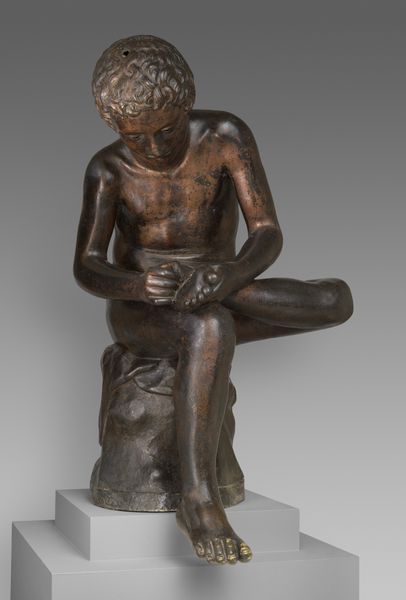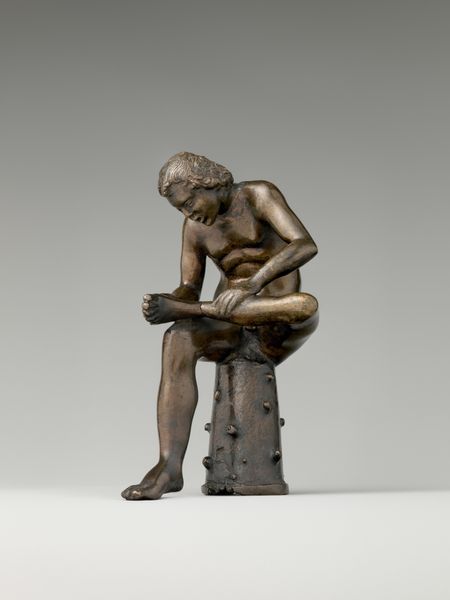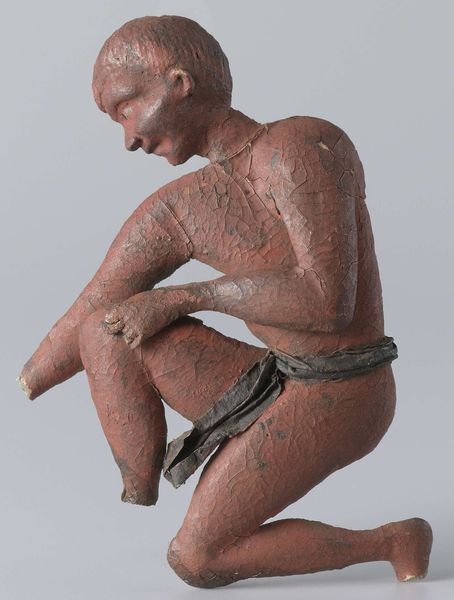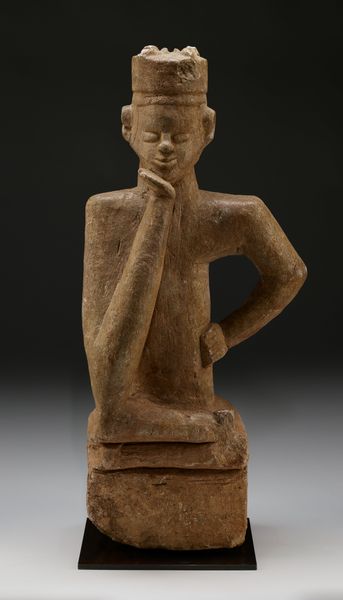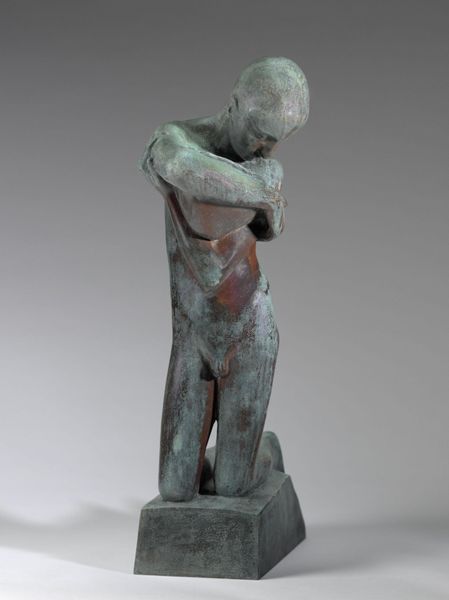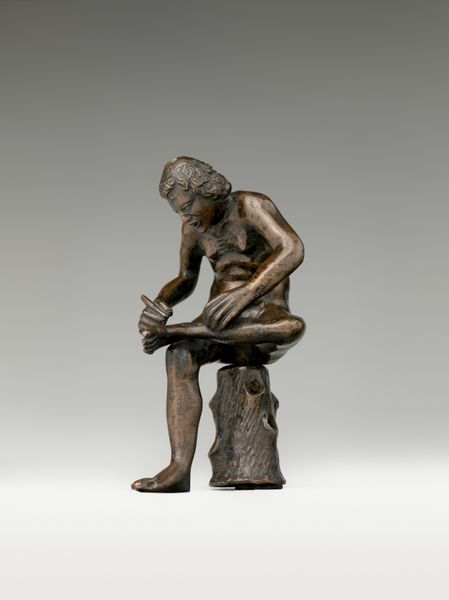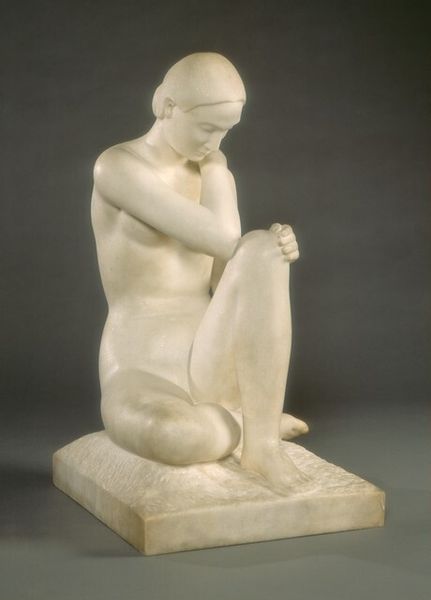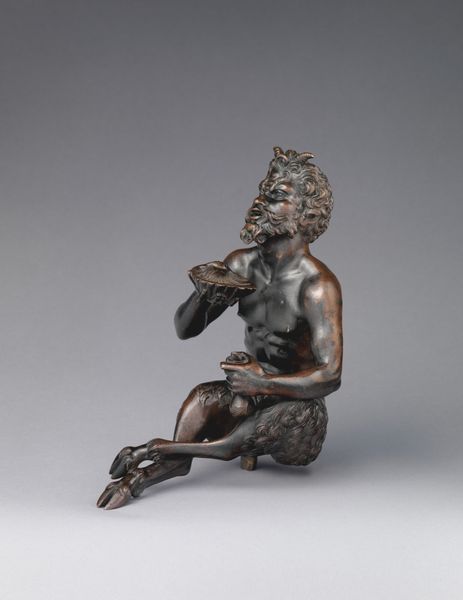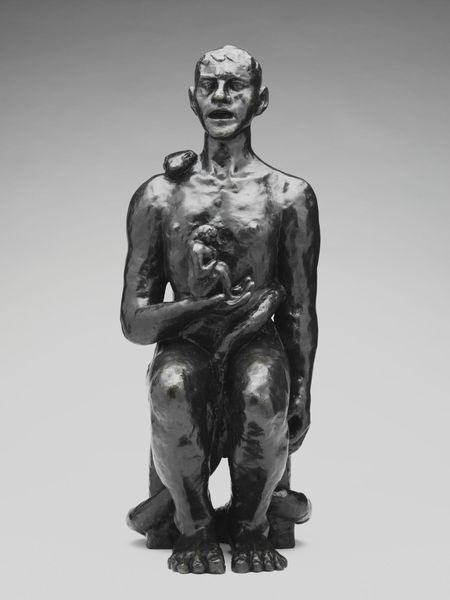
sculpture
#
portrait
#
sculpture
#
figuration
#
sculpture
#
modernism
Dimensions: height 120 cm, height 24 cm, width 64 cm, depth 64 cm, weight 443 kg
Copyright: Rijks Museum: Open Domain
Editor: Here we have "Man and Machine", a sculpture from around 1913 by Marinus Johannes Hack. Carved from stone, it shows a nude figure holding what appears to be an engine component. I find the mood rather somber, even reverential. What do you make of it? Curator: It's fascinating to consider this piece within the context of early 20th-century anxieties and fascinations surrounding industrialization. The title "Man and Machine" isn’t just descriptive, it’s a statement reflecting a broader cultural narrative. We have this almost classical, idealized male form – evoking traditional notions of human strength and beauty - but he's cradling this very modern, mechanical object. Editor: So, it’s about the relationship? Is it a celebration or a critique? Curator: Precisely! Is the figure dominating the machine, or is he almost subservient to it, studying it with reverence? The ambiguity is key. The sculpture invites us to consider how the rise of technology was impacting social structures, individual identities, and even the very definition of what it meant to be human. Where does humanity end and the mechanical begin? Consider also who would have seen it. Early modernists engaged deeply with industrialism. This sculpture then becomes a conversation *about* industry, not just its representation. Editor: I see what you mean. So, it's less about the man himself, and more about his place in a rapidly changing world. Curator: Exactly. Museums themselves, as institutions, play a role in defining the narrative around art and technology, shaping public perceptions of both. Editor: I hadn’t considered that. That makes me look at this piece differently, seeing how the institution frames the relationship between art and industry. Thanks for helping me see that! Curator: My pleasure! It's always enriching to unpack these layers of meaning and see how the sculpture participates in wider socio-political conversations.
Comments
rijksmuseum over 2 years ago
⋮
This statue stood at the entrance of the Amsterdam office of a company that exported machines to Dutch businesses in the former Dutch East Indies. The Javanese man, nude and sitting cross-legged, symbolizes the colony. The modern diesel engine in his lap alludes to the company’s trading activities, as well as to the progress that the Netherlands hoped to bring to Indonesia.
Join the conversation
Join millions of artists and users on Artera today and experience the ultimate creative platform.
